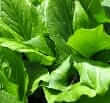Background
- Eastern skunk cabbage (Symplocarpus
foetidus), or skunk cabbage, is closely related to western skunk cabbage (Lysichiton
americanum). Although very similar, these swamp-growing plants do not belong to the same genus. Skunk cabbage is predictably named for the foul smelling oil produced by the plant. Care must be taken in preparation of skunk cabbage, as the large amounts of calcium oxylate in all parts of the plant may cause excruciating pain upon ingestion. - Skunk cabbage is used to promote labor and treat dropsy (edema). The flower essence of the plant is also indicated to "move stagnated energy." In addition to its medicinal properties, skunk cabbage is boiled and eaten by Native Americans as a famine food.
- Currently, there is a lack of available scientific evidence supporting the use of skunk cabbage for any indication.
References
Natural Standard developed the above evidence-based information based on a thorough systematic review of the available scientific articles. For comprehensive information about alternative and complementary therapies on the professional level, go to . Selected references are listed below.
- Berthold DA, Fluke DJ, Siedow JN. Determination of molecular mass of the aroid alternative oxidase by radiation-inactivation analysis. Biochem.J 5-15-1988;252(1):73-77.
View Abstract - Berthold DA, Siedow JN. Partial purification of the cyanide-resistant alternative oxidase of skunk cabbage (Symplocarpus foetidus) mitochondria. Plant Physiol 1993;101(1):113-119.
View Abstract - Bown D. Encyclopaedia of Herbs and their Uses. 1995.
- Chevallier A. The Encyclopedia of Medicinal Plants. 1996.
- Ito T, Ito K. Nonlinear dynamics of homeothermic temperature control in skunk cabbage, Symplocarpus foetidus. Phys Rev E Stat.Nonlin.Soft.Matter Phys 2005;72(5 Pt 1):051909.
View Abstract - Onda Y, Ito K. Changes in the composition of xylem sap during development of the spadix of skunk cabbage (Symplocarpus foetidus). Biosci.Biotechnol.Biochem. 2005;69(6):1156-1161.
View Abstract - Weiner MA. Earth Medicine, Earth Food. 1980.
- Whang WK, Lee MT. New flavonol glycosides from leaves of Symplocarpus renifolius. Arch Pharm Res 1999;22(4):423-429.
View Abstract







